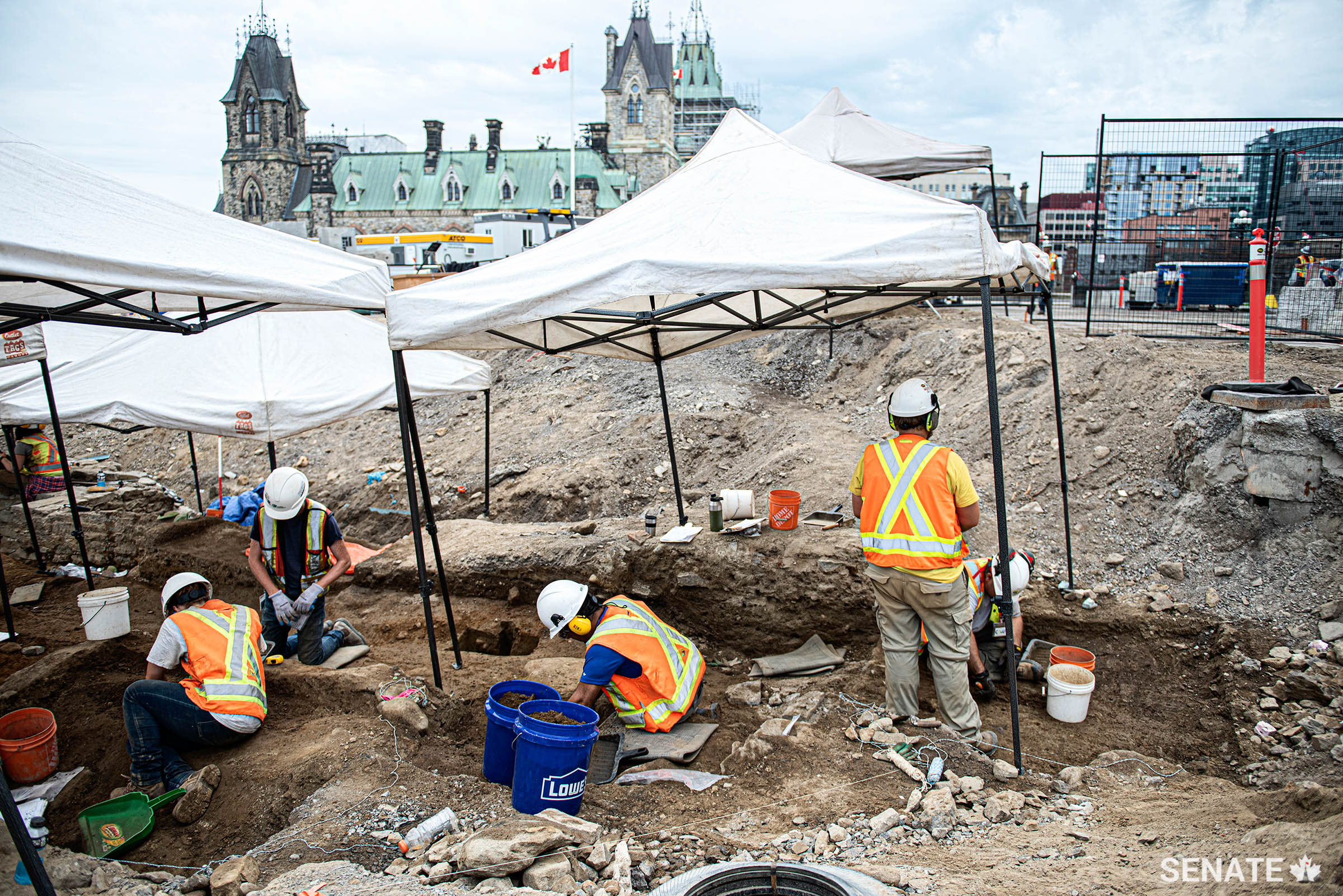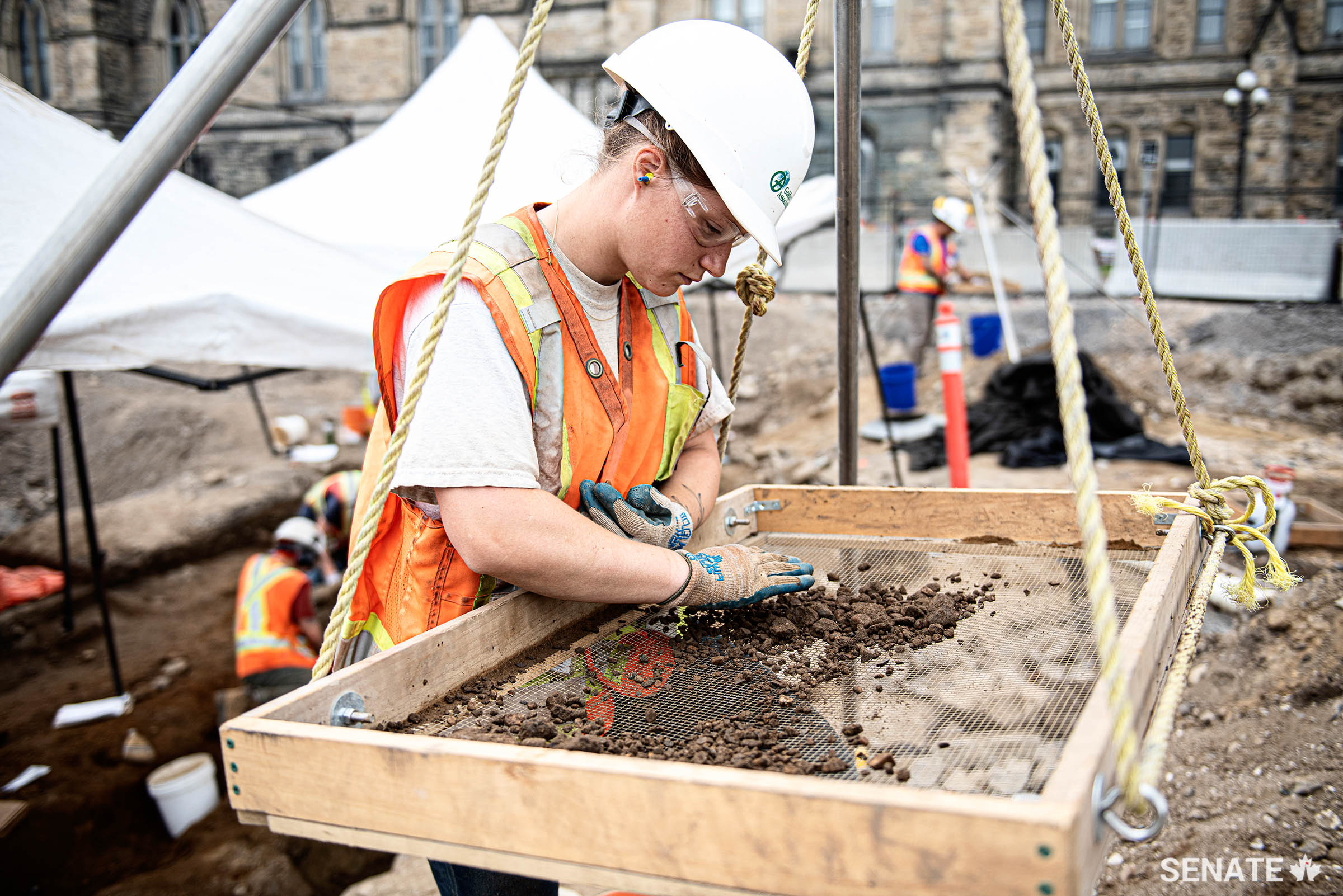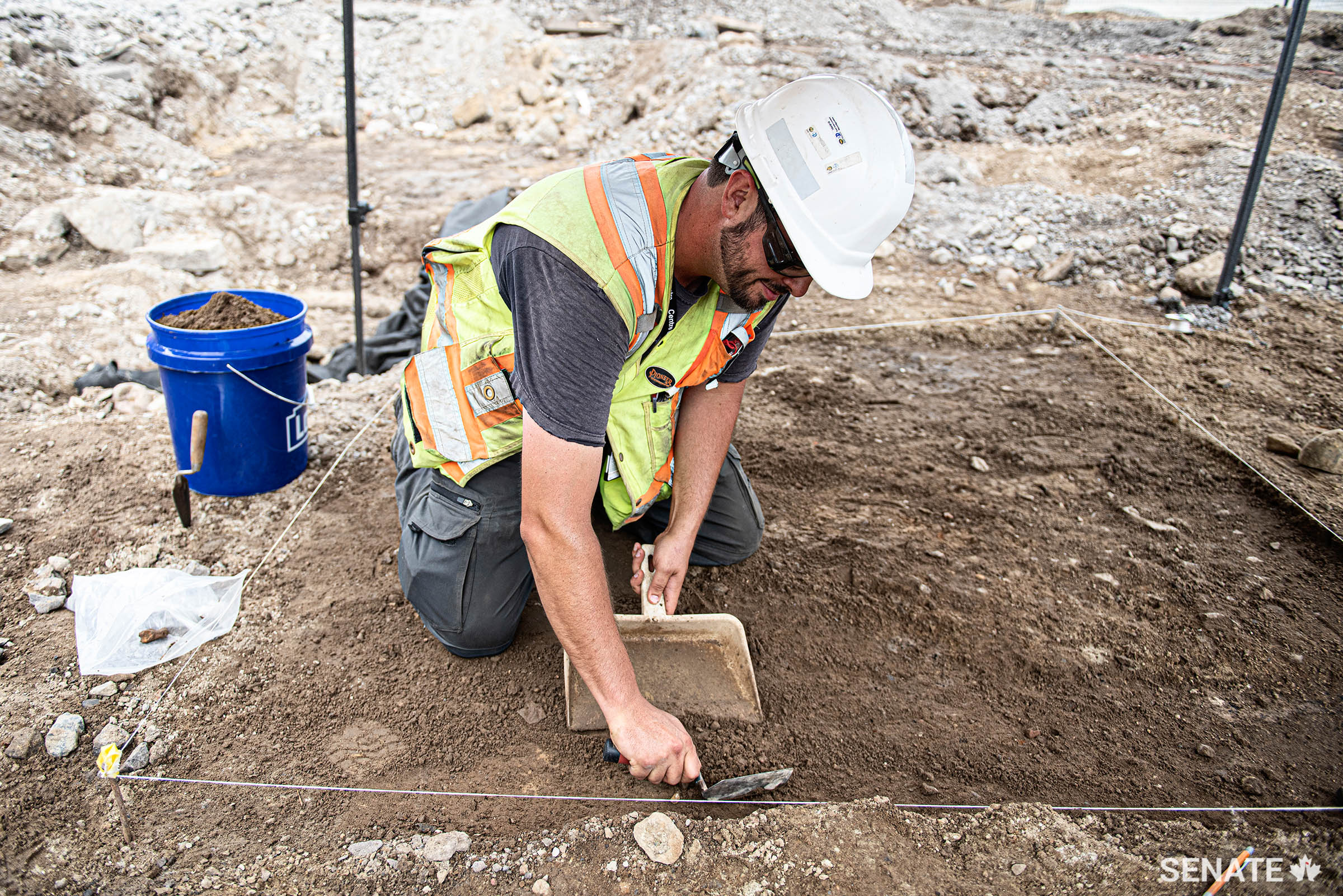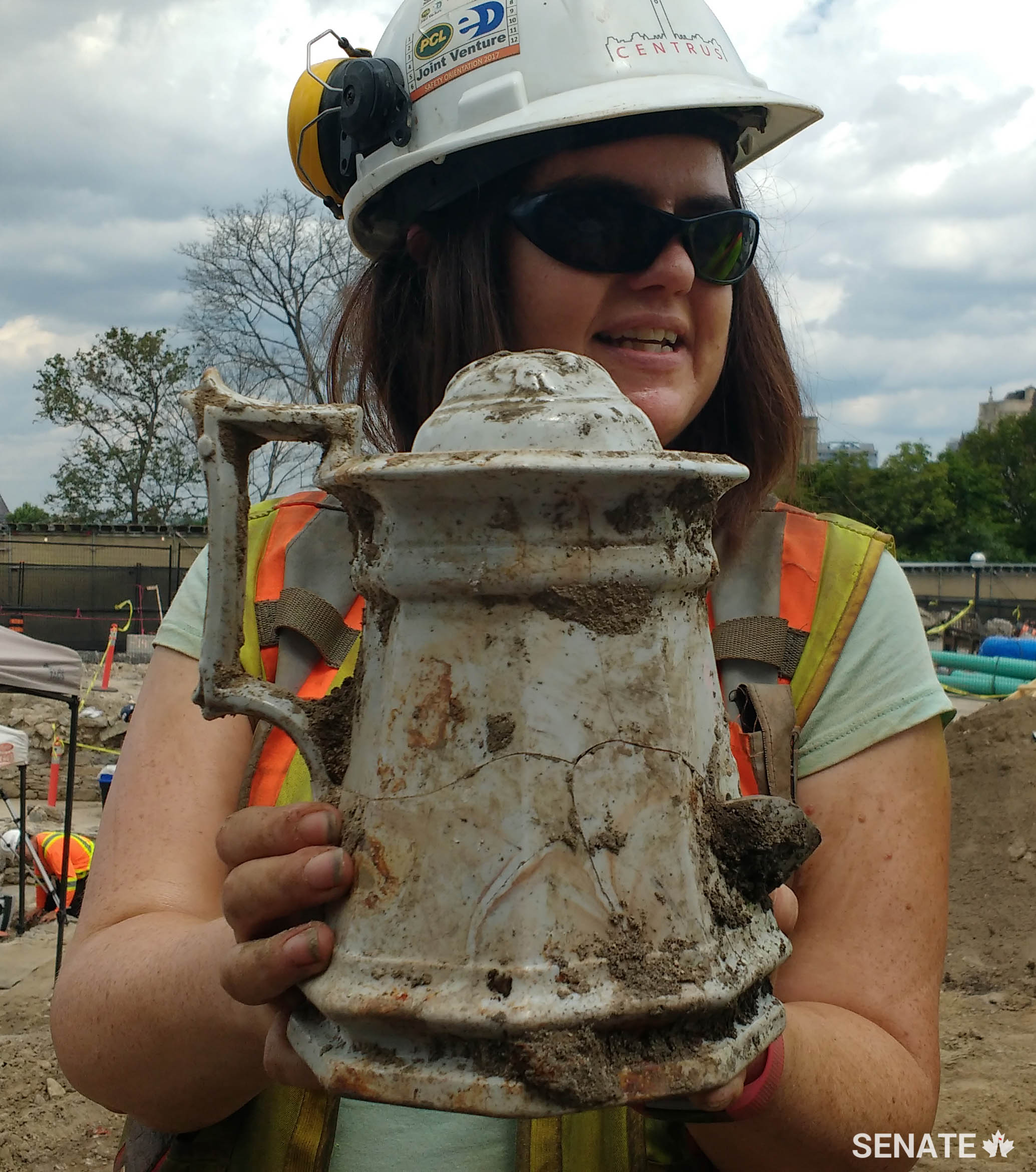Archaeologists sift through layers of history to uncover Parliament Hill’s secrets
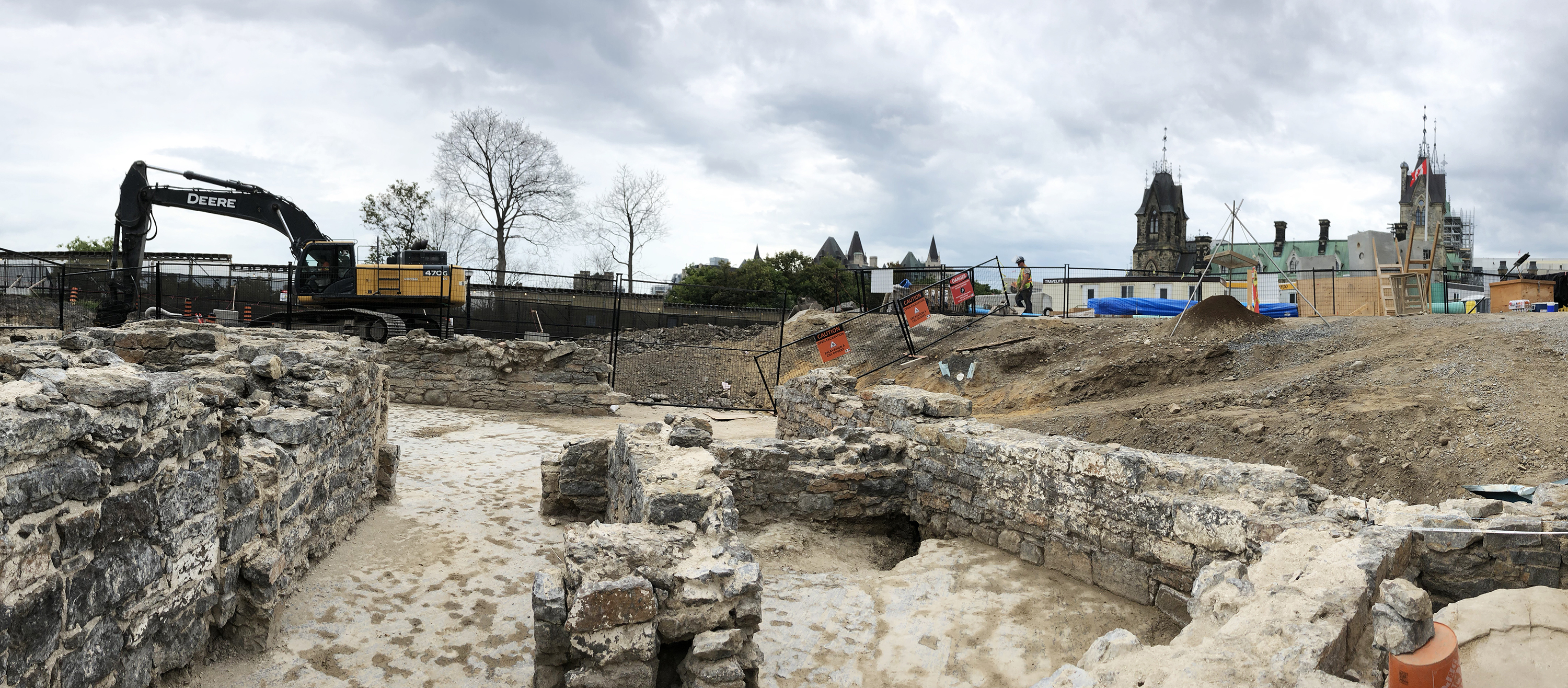
Before there was a Senate, a House of Commons or a Centre Block, what we know as Parliament Hill was a military camp perched above an enormous excavation that would become Ottawa’s Rideau Canal.
Archaeologists scouring the site in preparation for upcoming rehabilitation work on Centre Block are uncovering remarkable reminders of the Hill’s pre-Confederation past.
The rehabilitation of Centre Block — an overhaul covering everything from deteriorating plumbing and ventilation systems to accessibility and earthquake readiness — is the building’s first significant upgrade in its nearly 100-year existence.
The Senate has relocated to an interim home in the Senate of Canada Building — Ottawa’s former central train station built in 1912 — as the rehabilitation work continues for at least the next 10 years.
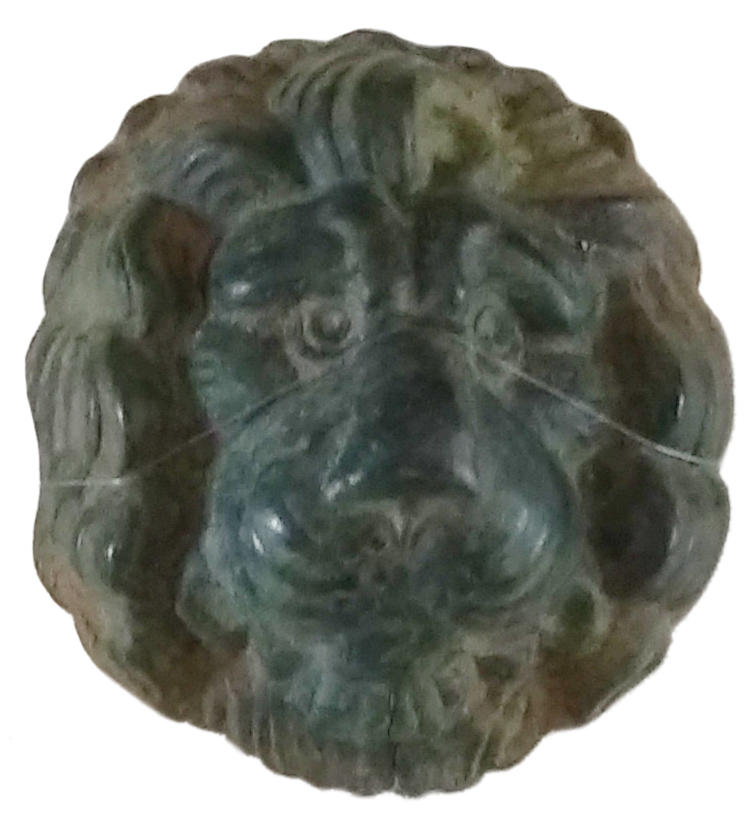
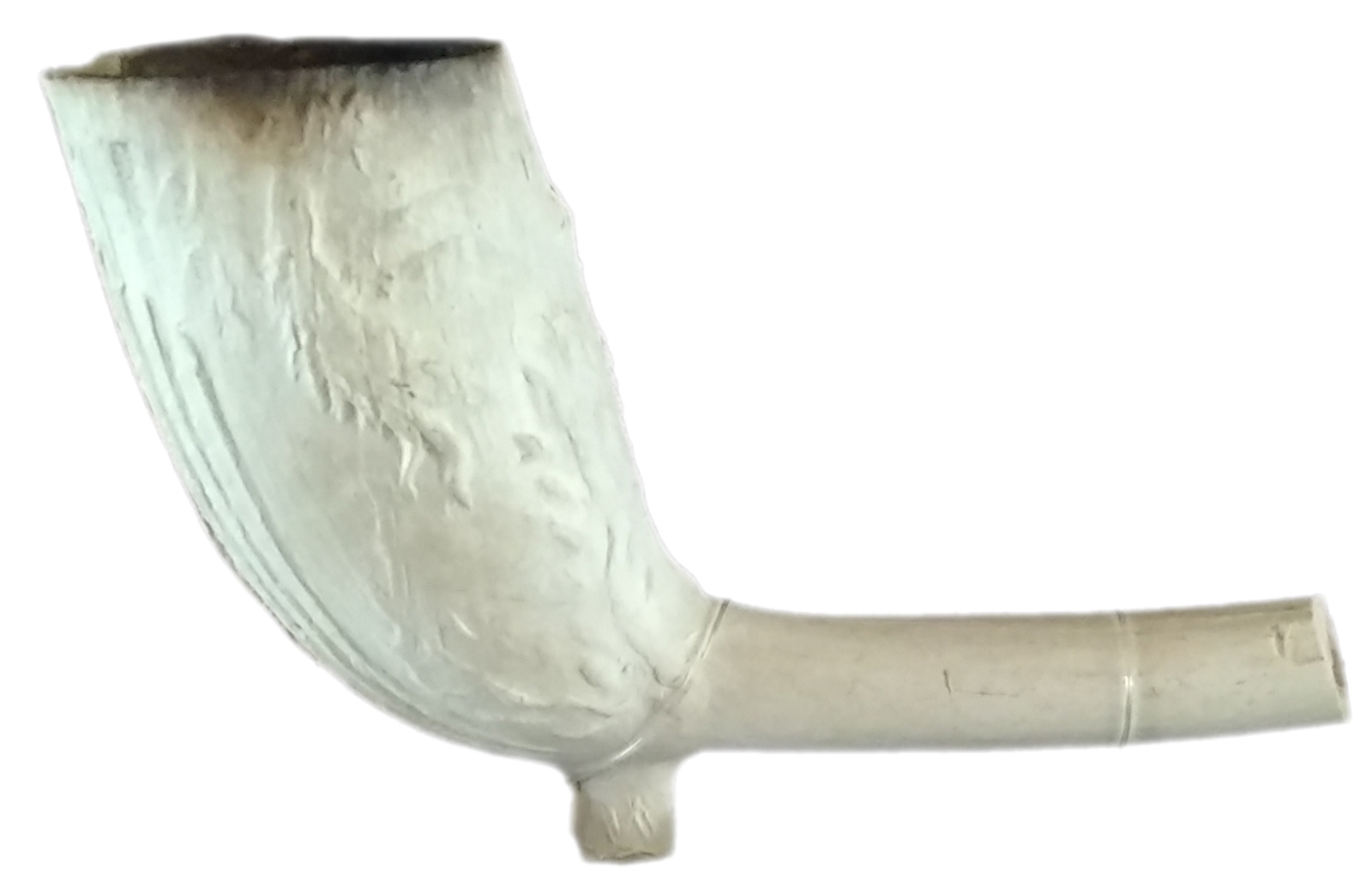
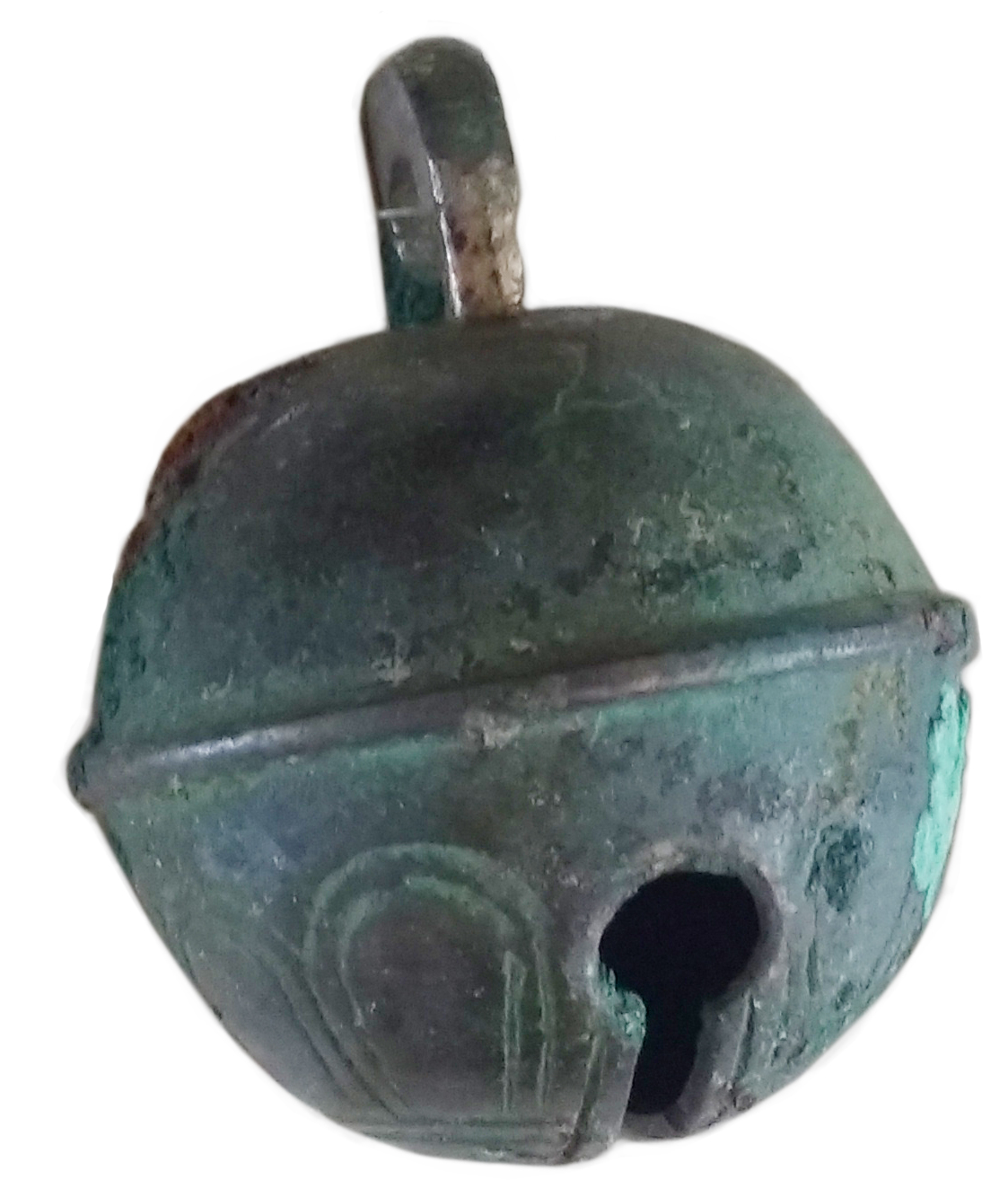
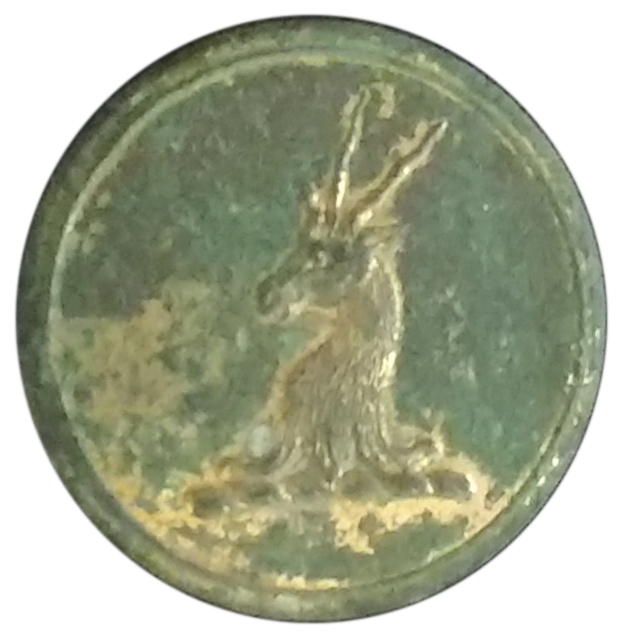
Archaeologists began excavating the Parliament Hill site in April 2019. What they are uncovering is remarkable; the remnants of a military complex of soldiers’ quarters, ammunition magazines and storehouses surrounded by a three-metre-high log fence that dates from the years when Ottawa was known as Bytown.
The foundations of barracks and a guardhouse have emerged on the east side of Centre Block, close to the Senate Chamber.
Artifacts unearthed here, including pins, regimental buttons and cap badges, paint a vivid picture of military life in the mid-1800s.
Other finds include pottery, dominoes, chess pieces, ceramic pipes, coins, liquor bottles and even a ceramic chamber pot — fascinating mementos of the daily lives of the occupants.
“Once we’ve excavated, there’s no way we can put the site back to the way it was so it’s important we keep detailed records at every step,” said Stephen Jarrett, archaeology project manager with Centrus, a consortium that is leading the architectural and engineering work on the site for Public Services and Procurement Canada, the department managing Centre Block’s rehabilitation.
As many as 30 archaeologists have been measuring, mapping and excavating the site, layer by layer.
“We use hand tools like trowels, scraping away the layers until we expose what’s underneath,” said Becky Remmer, one of the archaeologists working on the dig. “Then we use sieves to sift through what we’ve unearthed. All the artifacts are recorded and labelled so we can know exactly where they came from. It’s a painstaking process.”
Between 1827 and 1858, Parliament Hill was known as Barrack Hill and served as military quarters for the British Royal Sappers and Miners corps.
The War of 1812 had concluded more than a decade earlier but the threat from the United States lingered.
Lieutenant-Colonel John By, for whom Bytown was named, was in charge of constructing a 200-kilometre canal connecting the Ottawa River to Lake Ontario that would allow goods shipped between Montreal and Kingston to bypass the tense American border.
He had nearly 4,000 labourers at his disposal, but critical engineering and explosives expertise came from the 150 soldiers headquartered here.
The guardhouse, built in 1827, served a number of functions. Standing opposite the main entrance to the military compound, soldiers here monitored who entered and left the camp.
Its ground floor initially housed Ottawa’s first jail. The upper floor was converted to a hospital in later years.
Once construction of the canal was completed, the military camp wound down.
Bytown was renamed Ottawa in 1855 and, in 1857, was chosen by Queen Victoria to be the permanent capital of the United Province of Canada.
Most of the military buildings were demolished as construction began on the Parliament Buildings.
Excavation of the guardhouse and barracks is expected to be completed by fall 2019. Recovered artifacts are being catalogued, cleaned and identified by matching them against historical records and similar finds.
The expectation is that they will eventually go on public display, possibly as part of a planned underground Visitors’ Welcome Centre on Parliament Hill.
